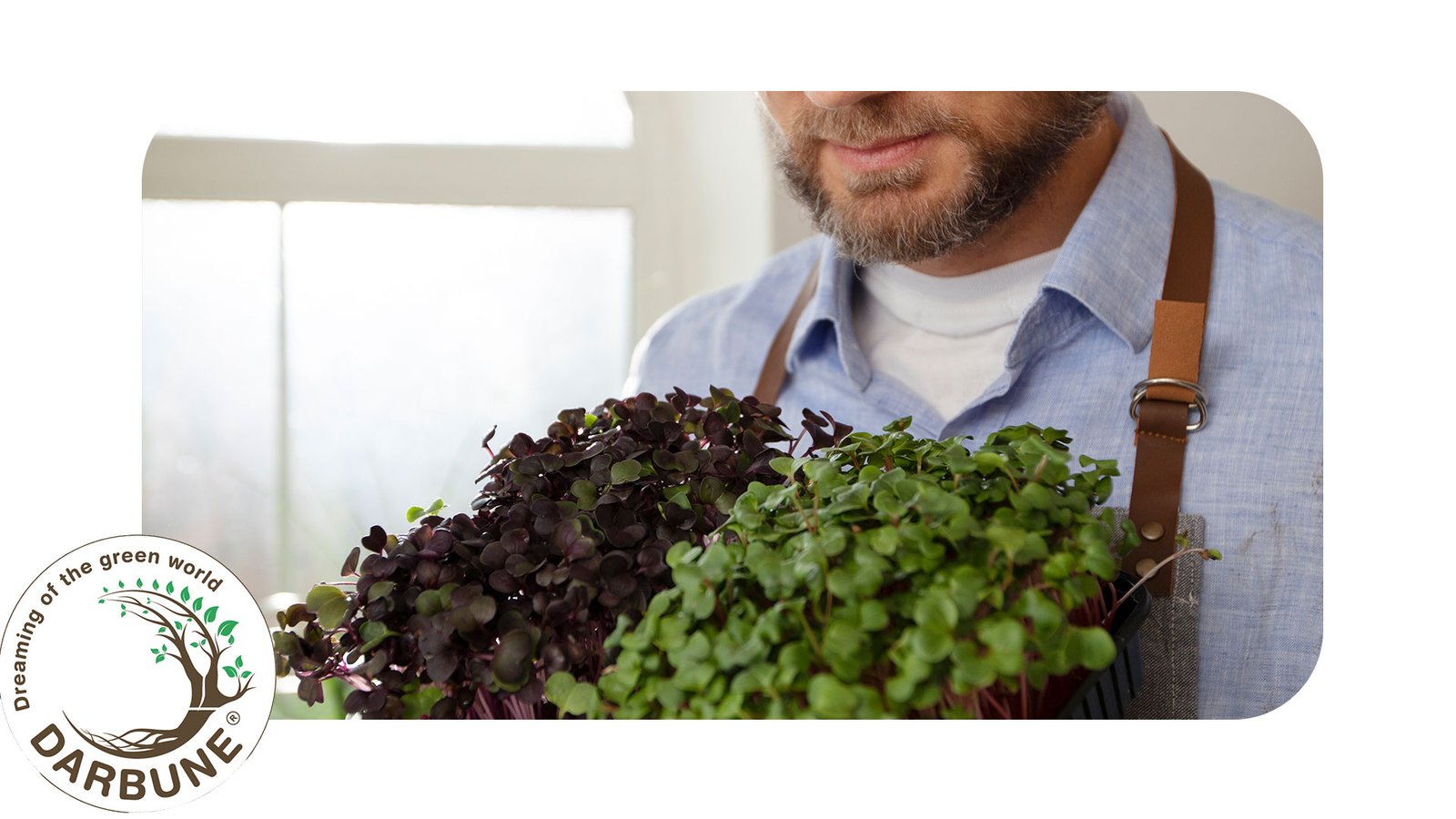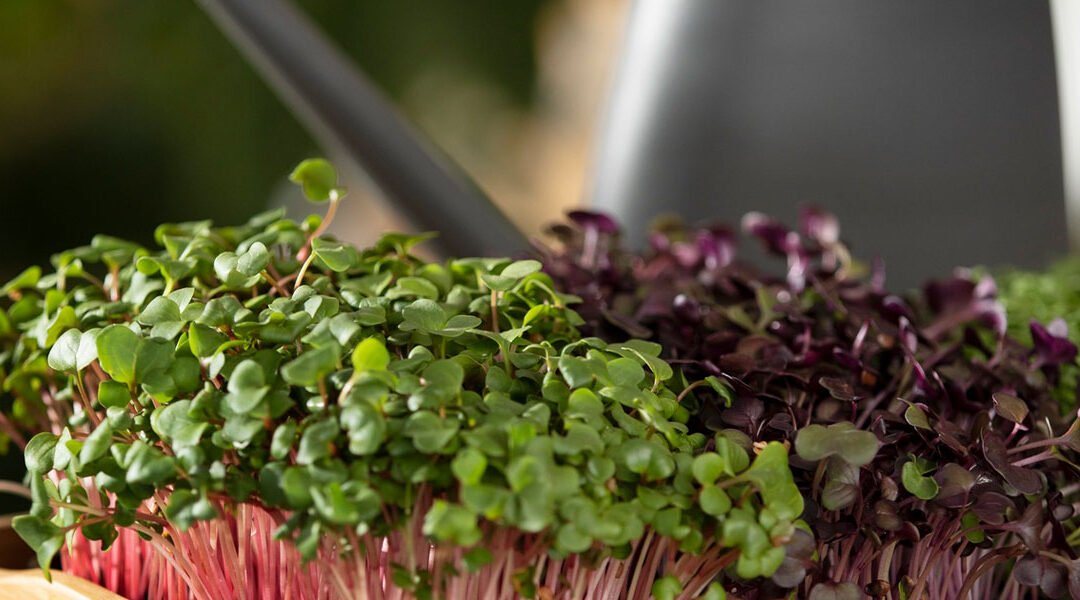With the increasing demand for fresh, locally sourced ingredients, micro-farming has become a lucrative business opportunity, especially for those looking to supply high-quality produce to cafes. Whether you have a passion for sustainable agriculture or want to turn your backyard into a profitable venture, starting a micro-farm can be a rewarding experience.
Micro-farming offers numerous benefits, including reduced transportation costs, fresher produce, and the ability to build strong relationships with local businesses. Sustainable indoor farming is an excellent approach for ensuring year-round production, reducing resource consumption, and optimizing space. In this guide, we will walk you through the essential steps to start your own micro-farm and successfully sell fresh ingredients to cafes.

Step 1: Planning Your Micro-Farm
1.1 Define Your Goals and Niche
Before investing in seeds and soil, it’s essential to establish your goals. Ask yourself:
- What type of ingredients will you grow (e.g., herbs, leafy greens, edible flowers)?
- Are you focusing on organic or hydroponic farming?
- Are you considering sustainable indoor farming methods?
- How much space do you have available for farming?
Understanding your niche will help you target the right cafes and ensure a steady demand for your produce.
1.2 Research Market Demand
To maximize profitability, research which ingredients local cafes are interested in. Some high-demand micro-farm products include:
- Microgreens (e.g., arugula, mustard greens, radish greens)
- Herbs (e.g., basil, mint, rosemary)
- Specialty greens (e.g., kale, Swiss chard, romaine lettuce)
- Edible flowers (e.g., nasturtiums, violets, marigolds)
Speak with cafe owners and chefs to understand their needs and preferences. Also, explore different types of indoor farming to determine the most efficient approach for your space and business model.
Step 2: Setting Up Your Micro-Farm

2.1 Choosing the Right Location
A micro-farm can be set up in various locations, including:
- Backyard or Urban Gardens: Utilize raised beds or vertical gardening.
- Greenhouses: Ideal for year-round production.
- Indoor Hydroponics: Allows for efficient, soil-free farming.
Hydroponic farming for small businesses is an excellent choice due to its space efficiency, reduced water usage, and potential for higher yields compared to traditional methods.
2.2 Essential Equipment and Supplies
To establish a productive micro-farm, you’ll need:
- Raised beds or containers (for soil-based farming)
- Grow lights (for indoor setups)
- High-quality seeds (organic, non-GMO preferred)
- Irrigation system (drip irrigation or hydroponic setup)
- Compost and organic fertilizers (for soil health)
2.3 Soil and Nutrient Management
Healthy soil leads to healthier crops. Follow these best practices:
- Conduct soil testing to determine pH levels and nutrient deficiencies.
- Add organic matter, such as compost or worm castings.
- Use crop rotation techniques to prevent soil depletion.
For hydroponic setups, ensure a proper balance of nutrients in the water solution. Additionally, explore ways to use AI in hydroponic farming to automate nutrient distribution, monitor plant health, and optimize growing conditions.
Step 3: Growing High-Quality Ingredients
3.1 Best Practices for Planting and Care
Each crop requires specific care, but general tips include:
- Proper spacing to ensure airflow and prevent disease.
- Consistent watering to maintain moisture levels.
- Pest control using natural methods like companion planting and beneficial insects.
3.2 Maximizing Yield
To get the most out of your micro-farm:
- Use vertical gardening to grow more in limited space.
- Implement succession planting to ensure a continuous harvest.
- Utilize companion planting to enhance growth and repel pests.
Step 4: Building Relationships with Cafes

4.1 Finding Potential Buyers
Connect with local cafes by:
- Visiting and introducing yourself with sample products.
- Attending farmers’ markets and food networking events.
- Creating an online presence to showcase your produce.
4.2 Pitching Your Produce to Cafes
When approaching cafes, emphasize:
- Freshness: Locally grown produce has superior quality.
- Sustainability: Many businesses prefer eco-friendly sourcing.
- Customization: Offer to grow specific ingredients based on their needs.
4.3 Pricing Your Produce
Consider:
- Cost of production (seeds, labor, water, packaging).
- Market rates for similar organic produce.
- Competitive pricing while ensuring profitability.
Step 5: Scaling Your Micro-Farm Business

5.1 Expanding Your Product Line
Once you establish a client base, diversify by adding:
- Specialty mushrooms
- Exotic herbs
- Small-batch artisanal products like infused oils or pickled vegetables
5.2 Marketing Strategies for Growth
- Leverage social media to showcase your farm and success stories.
- Create a website with an order form for easy transactions.
- Partner with influencers or food bloggers to reach a wider audience.
Conclusion
Starting a micro-farm to supply fresh ingredients to cafes can be a profitable and sustainable venture. By carefully planning your farm, growing high-quality produce, and building strong relationships with local cafes, you can create a successful business that supports both the local food movement and your financial goals. Additionally, implementing sustainable indoor farming practices and leveraging AI in hydroponic farming can improve efficiency and yield, making your business more competitive in the market.
Frequently Asked Questions (FAQ)
1. How much land do I need for a micro-farm?
You can start with as little as 100 square feet if you use vertical gardening or hydroponic methods.
2. How do I find cafes interested in buying my produce?
Networking, farmers’ markets, and cold calling local cafes are effective ways to find potential buyers.
3. What are the most profitable crops to grow?
Microgreens, herbs, and edible flowers tend to have high demand and profitability.
4. How can I ensure year-round production?
Using greenhouses, indoor hydroponics, or staggered planting schedules can help maintain a continuous harvest.
5. Is organic certification necessary?
While not mandatory, organic certification can help you attract premium customers and build trust with cafes.
By following these steps, you can successfully launch a micro-farm that provides fresh, high-quality ingredients to local cafes while also running a profitable business.

